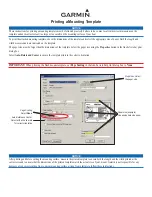
50
English
nMea Output
When the radio receives a DSC call (Distress, Position Reply, or Position Send), it outputs a
DSC/DSE sentence from the NMEA output port.
nOte: When the radio receives a distress call, it outputs a sentence in the following format.
$CDDSC,12,3081234000,,07,00,0354013946,0657,,,S,E*6D
$CDDSE,1,1,A,3081234000,00,60875646*13
Regulations and Safety Warnings
Maritime radio services operation
Warning!
This transmitter will operate on channels/frequencies that have restricted use in
the United States. The channel assignments include frequencies assigned for exclusive use of
the U.S. Coast Guard, use in Canada, and use in international waters. Operation on these fre-
quencies without proper authorization is strictly forbidden. See the channel tables beginning
on page
40
for a list of available channels and their uses. If you are still not certain which
channels to use, see the FCC maritime radio page at the FCC website (http:// wireless.fcc.
gov/marine/) or contact the FCC Call Center at 1-888-CALLFCC. For individuals requiring a
license, such as commercial users, you should obtain a license application from your nearest
FCC field office (for US users) or Industry Canada (for Canadian users).
Basic radio guidelines
You should familiarize yourself with the rules on marine radios and be aware of which rules
apply to your boat. Complete guidelines for all ship and marine radio types can be found
at the US Coast Guard website under the topic Radio Info for Boaters (the direct link is
http://www.navcen.uscg. gov/marcomms/boater.htm
). Here are a few guidelines that
affect nearly all boaters.
If you have a VHF radio on your boat, you must maintain a watch on channel 16 (156.800
MHz) whenever the radio is not being used to communicate. Effective from 2004, if a radio
is carried, it must be turned on and set to channel 16 whenever your vessel is underway.
If you hear a distress call, wait a few minutes to let a shore station or Coast Guard ves-
sel respond. If no other station has responded after 5 minutes, you must respond to the
distress call.
Do not make false mayday or distress calls as a prank or to test your radio. (This is essen-
tially like making a false 9-1-1 call; you may be subject to fines.)
FCC Information
This device complies with Part 15 of the FCC Rules. Operation is subject to the condition that
this device does not cause harmful interference.
Unauthorized changes or modifications to this equipment may void compliance with the FCC
Rules. Any change or modify cation must be approved in writing by Uniden.
Any changes or modifications not expressly approved by the party responsible for compli
-
ance could void the user’s authority to operate this device.
•
•
•




































